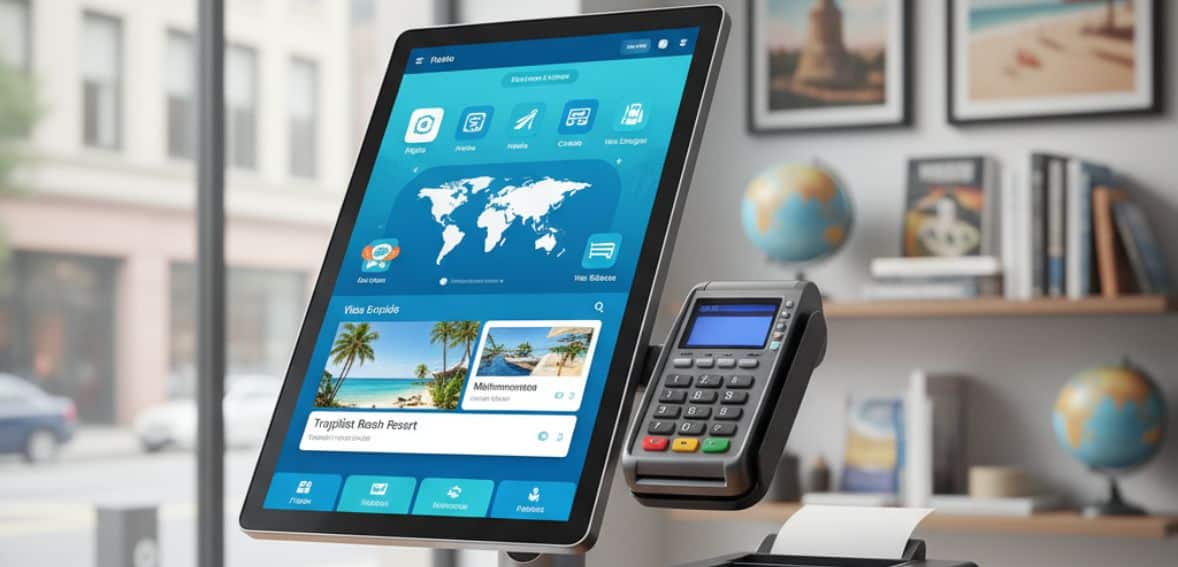
By alphacardprocess October 5, 2025
Travel agencies manage numerous responsibilities, ranging from flights and accommodations to customer and payment management. An accurate POS system is crucial for maintaining these processes smoothly. Basic sales functions are maintained by standalone systems, whereas integrated POS systems consolidate bookings, payments, and accounting in one system.
Comparing the two options, travel agencies are able to further identify which option suits them best and provides efficiency, cost-effectiveness, and better customer care.
Why Do Travel Agents Require a POS System?
A POS system can make running a travel agency a lot easier and more streamlined. It provides easy integration into your online booking portal, so clients can book flights, hotels, and activities on your site. You can even brand the online menus to your own identity and build a seamless booking process for customers.
POS systems also assist with quotes, enabling you to produce precise pricing in a hurry and provide several package offers based on airline, hotel, or activity availability. Integrated CRM functionality captures customer data automatically, including history of travel, loyalty program behavior, and contact information, which enables you to customize offers and optimize marketing campaigns.
Besides, a POS offers in-depth reports about finances, sales, and bookings. Reports can be personalized to suit the needs of your business, and analytics tools can be used to identify trends and prepare for the future. With these functionalities, a POS system is an invaluable tool for travel agents, enhancing efficiency, customer service, and decision-making.
What Is a Standalone POS System?
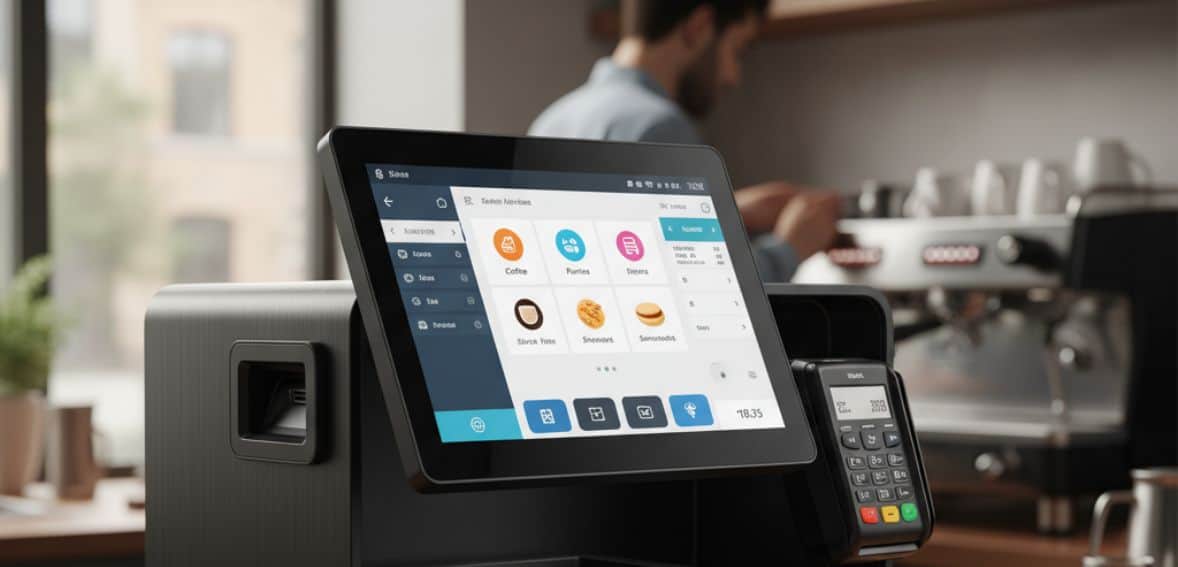
A standalone POS system is an easy-to-use payment solution that functions independently, not requiring connection with other business software. It’s built to be fast, secure, and easy to operate, so it’s great for companies that only need to take payments without added complexity.
It usually comes with a secure payment processor like terminal or card reader, fundamental sales tracking, basic receipt printing, and basic reporting capabilities. As it works by itself and doesn’t need much configuration, it’s ideal for stores, restaurants, or service stations where speed and ease are most important.
Standalone POS: Key Advantages
A standalone POS system aims towards keeping things easy. It is simple to install, easy to use, and employees can begin utilizing it in minutes, saving training time and dollars. For small companies, it’s also an affordable option because it contains just the features you actually need, without the added cost of complicated systems.
Its mobility makes it ideal for mobile operations such as food trucks, street vendors, or event vendors, and most of them are able to process transactions offline. With fewer technical requirements, the systems are more stable and less likely to be affected by breakdowns, which makes them a convenient option for small operations.
Standalone POS: Drawbacks to Keep in Mind
Although standalone POS systems are easy to use and inexpensive, they have some limitations as well. They tend to offer basic sales information, and therefore, companies lose access to more profound information, such as customers’ behavior, inventory patterns, or cross-selling potential. Since these software applications don’t integrate with other applications, manual data entry and reconciliations are usually needed, adding additional labor and raising the possibility of errors.
As a company expands, standalone POS can be challenged to adapt to increased volumes of sales, multiple locations, or sophisticated requirements. Lastly, with no access to detailed customer information, it becomes more difficult to tailor experiences or establish strong, lasting customer relationships.
What Is an Integrated POS System?

An integrated POS system is more than a terminal—it ties your checkout process into the rest of your business. Rather than existing independently, it interfaces directly with resources such as cash registers, inventory control, customer relationship management (CRM) applications, and even accounting software. It can be integrated with e-commerce solutions, employee scheduling software, and business analytics software as well.
By integrating it all, an integrated POS system provides a seamless stream of information throughout your business. Payments, sales, stock, and customer data all automatically sync, saving time, minimizing manual entry mistakes, and providing clear-cut visibility into performance. For companies that desire efficiency and wiser decision-making, an integrated POS system presents an effective solution.
Integrated POS: Key Advantages
An integrated POS system provides companies with a total overview of their operations by linking payments to inventory, customer information, and other critical data. It becomes easier to comprehend performance and make wiser decisions with this single setup. With information automatically passing between systems, it eliminates manual labor, reduces admin expense, and minimizes mistakes that can impact customers or reports.
It also facilitates improved customer experience through the provision of purchasing history and personal preferences to staff, making personalized service and upselling simpler. Best of all, integrated POS systems are designed to expand with your business, coping with increased sales, multiple sites, and more sophisticated requirements without significant disruption.
Some Drawbacks of Integrated POS System
Integrated POS systems have numerous advantages but also there are some drawbacks to be considered. One of the biggest is cost. As these systems incorporate advanced features and hardware, the initial investment can be high. A travel agency with only a tablet and card reader will cost less, while a large agency will use several devices, printers, and cash drawers. Which could require as much as $1,500 to set up, plus annually about $1,200 for software costs. To add to that, there are charges between 1.3% and 3.5% on each transaction.
Another disadvantage is overdependence on technology. Integrated POS systems rely on fast internet and seamless device operation to function optimally. When your connection is slow, or a tablet, card reader, or printer fails, transactions are interrupted. Some systems have offline capabilities, but not all.
There is also a learning curve. As the systems have so many features, employees cannot always utilize them to their full potential immediately. Without training, errors and inefficiencies are very common, which impacts both speed and customer service. It takes time, direction, and practice for employees to adapt fully.
Lastly, although integrated POS systems are built with security in mind, they are not without risk. Threats such as phishing, malware, and data breaches exist because these systems contain sensitive payment and customer information. Fraud also exists, and studies indicate that millions of digital transactions annually are suspected to be fraudulent. It is thus important for companies to implement secure payment channels, fraud detection software, and regular updates to safeguard customer trust.
Who Needs an Integrated POS?
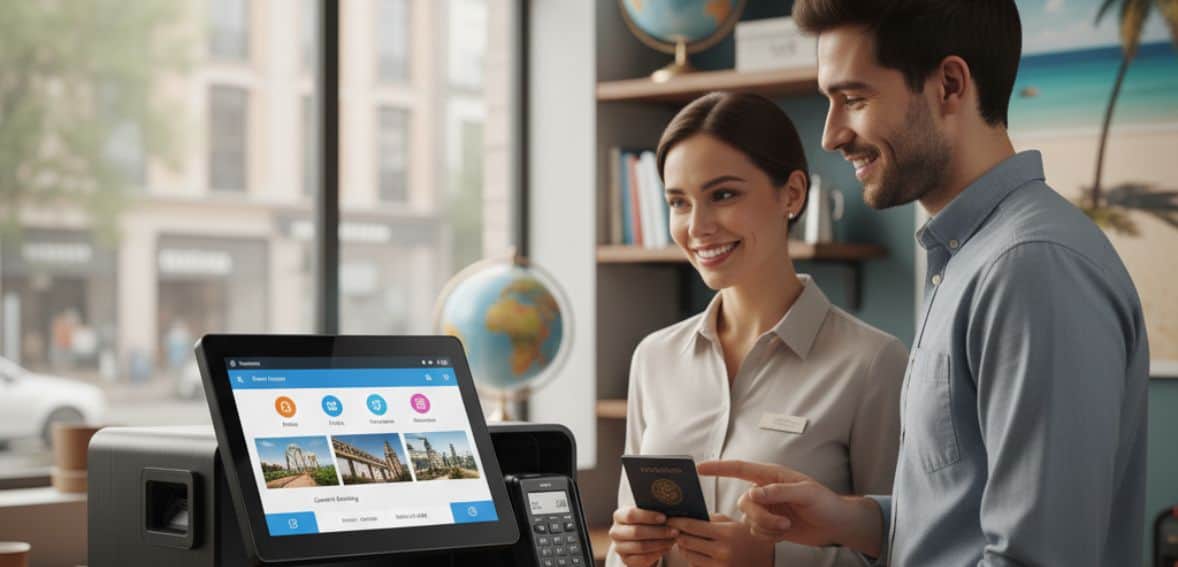
If your company employs several tools, operates several sites, or runs an online business, a combined POS can simplify everything. For brick-and-mortar stores, it ties sales, inventory, and customer information together so you can see trends and re-order best-selling items before they sell out.
Restaurants gain by linking orders to the kitchen so orders are served more quickly and all the elements are coordinated. eCommerce companies can connect online orders to inventory and fulfillment, assisting in dropshipping and marketing management. Omnichannel retailers selling online and in-store can provide a seamless experience to customers, with returns, reward points, and purchases reflected in real time using one integrated system.
How to Select the Best Integrated POS System for Your Business
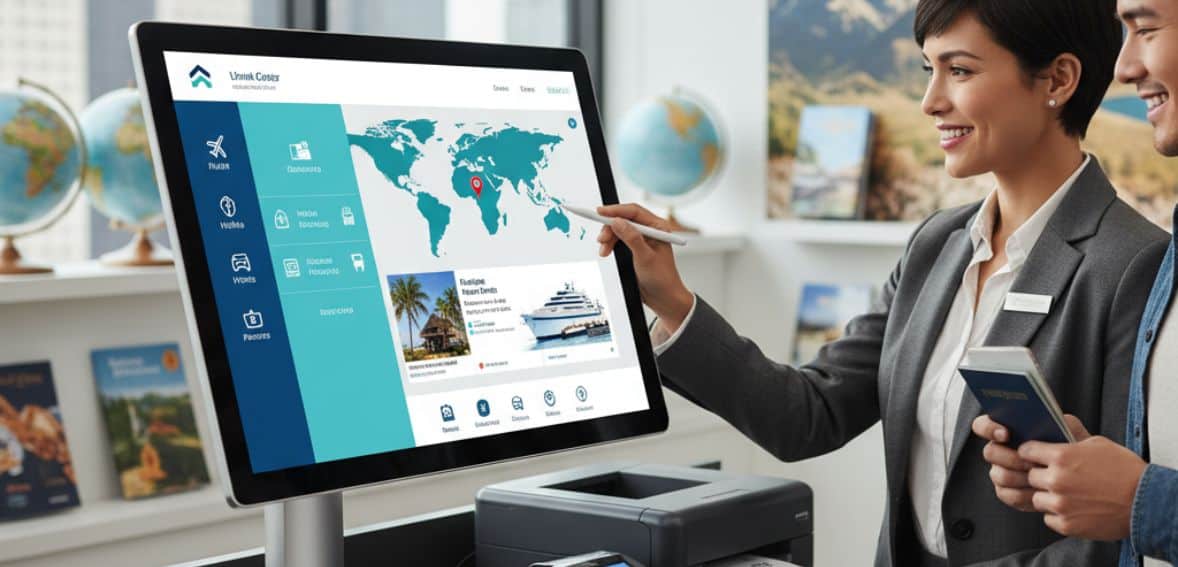
Choosing the appropriate integrated POS system is one of the most significant decisions a business owner can make. The initial step is to consider thoroughly your specific needs and operations on a daily basis. For instance, a clothing store would have to Beed to do robust inventory tracking and customer relations features, whereas a store in a rural area would need offline functionality to ensure sales continue uninterrupted even during internet shutdowns or power outages.
Another important factor is ease of use. Your POS must be easy enough for your staff to learn in a short time, yet sophisticated enough to perform critical functions. Ensure it will integrate smoothly with hardware and software that you currently use so you don’t have to double-up on expenses for replacements.
Scalability is also something to keep in mind. As you grow your business, you’ll want a system that can scale easily—whether that’s new sales channels, more staff, or even new stores. Lastly, never underestimate customer support. A good vendor who offers quick assistance when things go wrong can save you a tremendous amount of headaches and downtime. The right integrated POS isn’t a tool—it’s an ally that assists your business in growing smoothly and efficiently.
Complete Comparison: Standalone vs Integrated POS
Feature / Factor | Standalone POS | Integrated POS |
Initial Setup | Quick deployment with minimal technical requirements | Requires configuration, integration work, and potentially developer assistance |
Mobility | Highly portable and flexible for changing environments | Ranges from fixed installations to cloud-based mobile solutions |
Upfront Cost | Lower initial investment with straightforward pricing | Higher initial investment with potential implementation costs |
Ongoing Costs | Simple subscription or transaction fees | Potentially higher maintenance costs but better operational efficiency |
Business Intelligence | Basic sales reporting and transaction history | Comprehensive data analytics across multiple business functions |
Operational Efficiency | Manual reconciliation with other systems required | Automated data synchronisation reduces administrative burden |
Scalability | Limited growth potential without significant changes | Designed to accommodate business expansion and complexity |
Customer Experience | Basic transaction processing with some personalization features | Enhanced personalisation and streamlined service delivery across channels |
Technical Complexity | Minimal technical knowledge required | Requires deeper technical understanding or support |
Offline Capability | Often works without continuous internet connection | Variable offline functionality depending on system architecture |
Selecting the Right POS System for Your Business
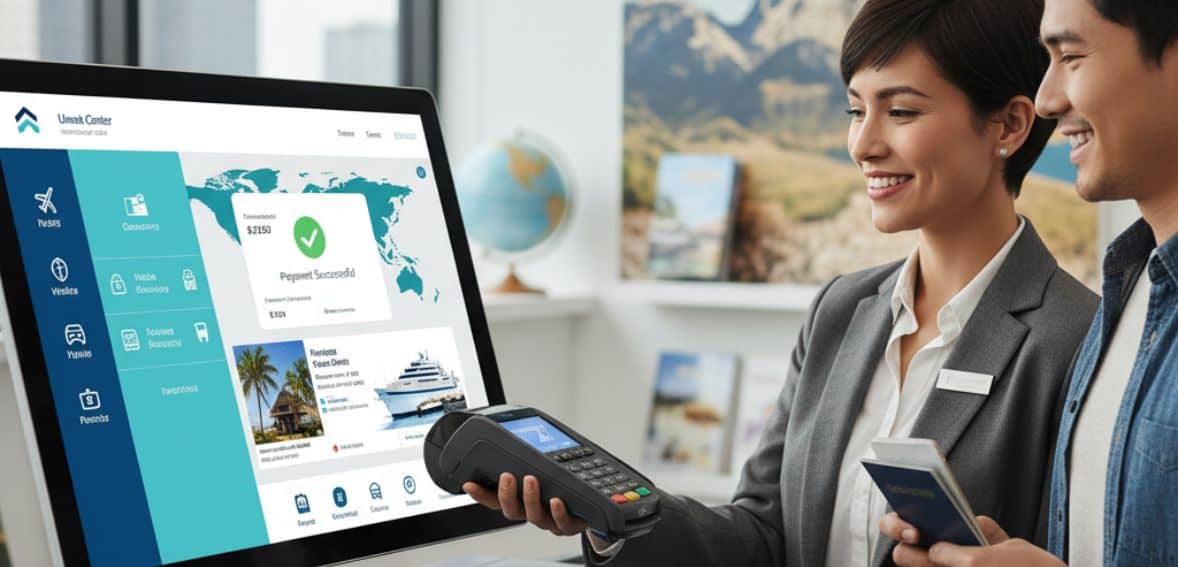
Choosing the right POS system is based on your business size, complexity, and future growth plans. For small, single-location stores with straightforward transactions and minimal inventory, a stand-alone POS typically gives you all the simplicity without any added complexity. If your organization lacks technical expertise, stand-alone systems are simpler to install and maintain, whereas firms with robust IT infrastructure can benefit fully from integrated systems.
Basic operations fit perfectly with stand-alone installations, but sophisticated inventory, pricing, or customer requirements are served better by integrated solutions. Last but not least, companies with stable and predictable operations can be perfectly fine with standalone POS, while those with rapid expansion or growth in mind will require scalability and flexibility like integrated POS.
Hybrid Solutions: Best of Both
The decision to use standalone versus integrated POS systems isn’t always easy. Most companies prefer a hybrid solution that puts together the ease of standalone systems with the functionality of integration. Modular integration allows businesses to begin with core payment functionality and incrementally build bridges to inventory, CRM, or accounting software as their requirements expand—providing flexibility without an overhaul of the entire system.
Some enterprises begin with a stand-alone POS and implement a long-term integration plan, minimizing disruption while getting ready for expansion. More extensive businesses can employ a combined POS for core operations and other systems for seasonal sales, pop-ups, or individual departments for having a well-balanced, flexible solution.
Conclusion
The decision between standalone and integrated POS systems is a crucial one for travel agencies. Whereas the former can work for small agencies with minimum needs, the latter offers a more comprehensive means of handling bookings, payments, and finances in a single location. Integrated POS systems assist agencies in saving costs, reducing manual labor, and enhancing customer service, enabling agencies to operate more effectively. The decision depends on the convenience you need for everyday operations, your business size, and growth strategy.
FAQs
What is a travel agency POS system?
A POS system assists agencies in organizing bookings, payments, and accounting within one platform, making everyday operations easier.
In what way does an integrated POS differ from a standalone POS?
Integrated POS integrates bookings, payments, and accounting, whereas standalone POS primarily deals with simple transactions.
Is an integrated POS more expensive than a standalone POS?
Yes, but it is cost-effective in the long run by eliminating manual labor and additional software expenses.
Can a POS system enhance customer experience?
Yes, it accelerates bookings, provides correct quotes, and facilitates loyalty programs for improved service.
What POS system works best for expanding travel agencies?
Integrated POS is the best, as it grows with business expansion and offers multiple locations and services.